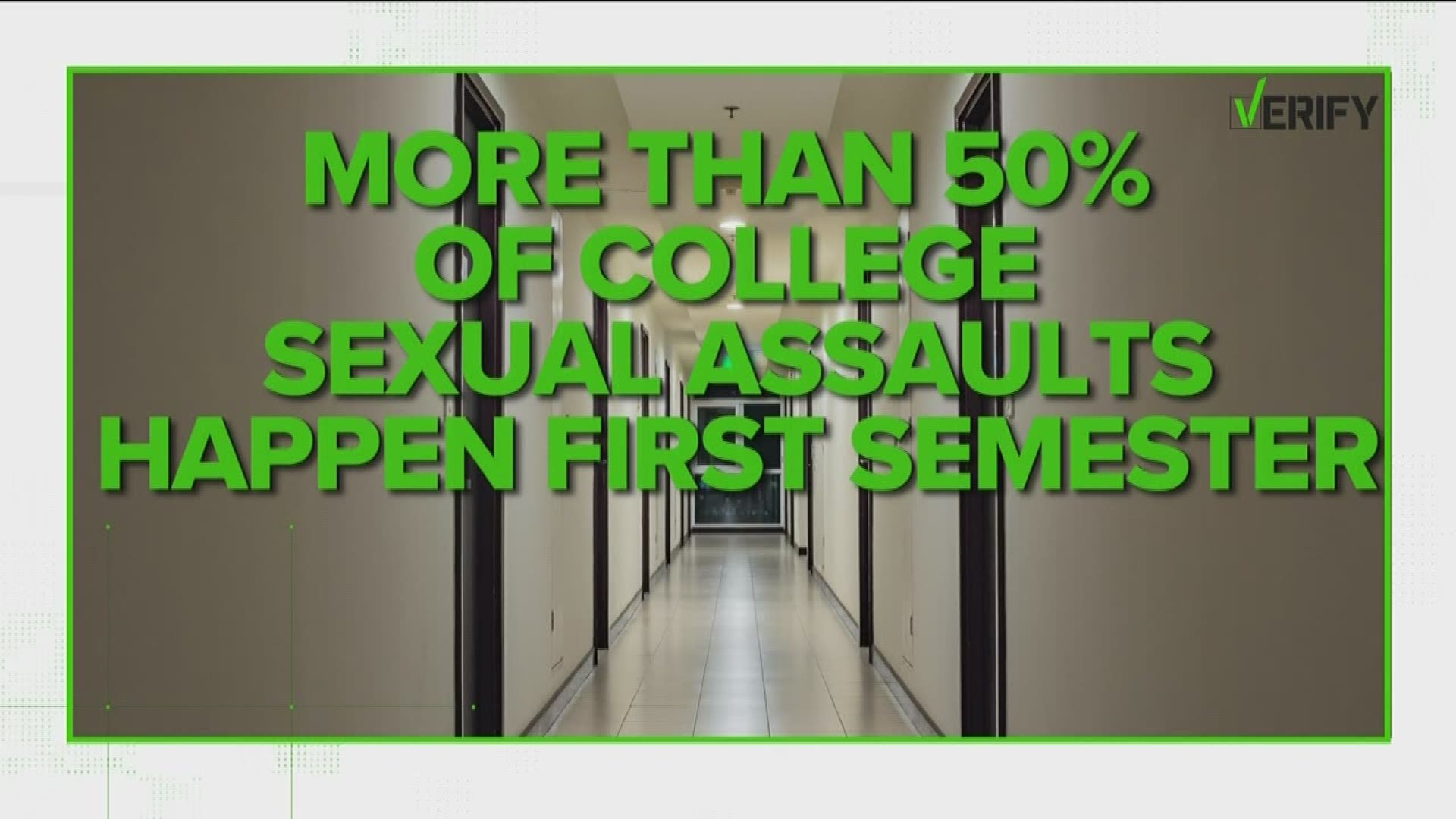ATLANTA — The return to campus means the return of the 'red zone,' the high risk period when sexual assaults on college campuses seem to spike.
Social media echoes warnings, but is the red zone real?
Andrea Curcio, professor at Georgia State University's College of Law, explained the concerning trend.
"'Red zone' indicates high-risk time," Curcio, who specializes in campus sexual assault research, said. "There are two government studies, one by the Department of Justice in 2007 and one by the Bureau of Justice in 2014-2015. Both of those studies confirmed that from August to November is the high-risk time and, particularly, for college freshman."
The 2007 study found more than 50 percent of college sexual assaults happen the first semester, with most assaults occurring between midnight and 6 am.
The latter study surveyed more than 23,000 students across nine different schools, finding that incoming first-year female students were at the highest risk in the first few months of the academic year.
"Most on-campus assaults happen in college dorms and residence halls," Curcio said. "Students are most likely to be assaulted by someone they know but know casually. They have never been away from home and there's all this freedom. Some students haven't developed a cohesive group to watch out for one another."
Bystander intervention is an important part of prevention, according to Curcio, who verified, along with the government studies, the "red zone" is real.
"As parents we need to start the education process before they step on campus," she said, adding that "under reporting is a real phenomenon."
"So few campus sexual assaults actually get reported that we really only see the tip of the iceberg," Curcio said. "Being aware of the danger time, the danger areas, what we can do as a community, really makes a difference."
In 1990, the U.S. passed the Jeanne Clery Disclosure of Campus Security Policy and Campus Crime Statistics Act, which requires schools that receive federal funding to disclose crime information. Local universities have posted the following crime statistics via their
- Emory: http://clery.emory.edu/
- Georgia State: https://safety.gsu.edu/category/crime-alerts/
- Georgia Tech: http://www.police.gatech.edu/crime-statistics
- Kennesaw
State University : https://police.kennesaw.edu/info/crime-log.php - Morehouse College: https://www.morehouse.edu/campussafety/annualreport.html
- Spelman College: http://princess.spelman.edu/crimealert.nsf/bydate
- University of Georgia: https://safeandsecure.uga.edu/reporting-crime-data/
MORE VERIFY STORIES

